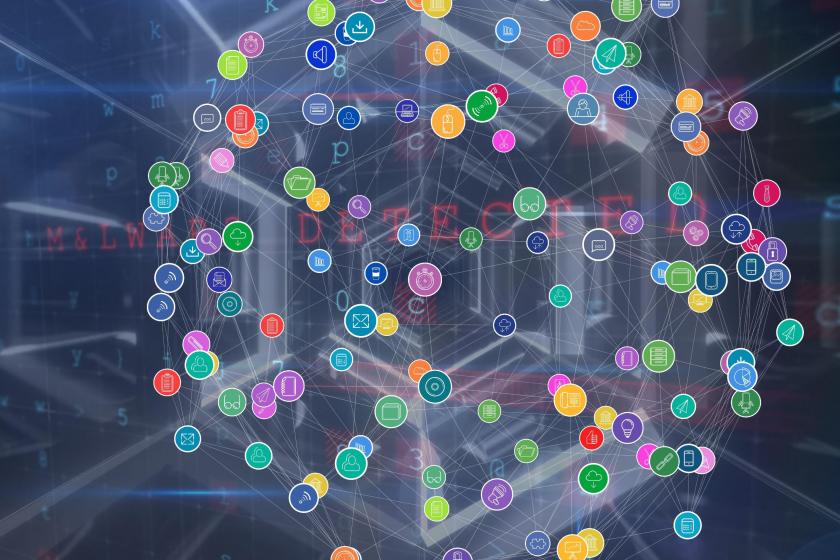How Cisco Sees Silicon One Easing Network Convergence and Helping with AI
With the rise of AI and its massive impact on networking, Cisco has pivoted swiftly to enable customers to utilize its converged networks to run taxing AI apps.
February 13, 2024

Recently, Cisco held a Tech Talk focused on Cisco’s Silicon One and how the company believes you can converge a network without compromising security, performance, and manageability. The discussion also shed light on how Cisco is dealing with the rise of AI and the role of the network.
Pierre Ferragu, who heads up the global technology infrastructure research team at New Street Research, hosted the session. He was joined by Eyal Dagan, EVP of the company’s Common Hardware Group, and Rakesh Chopra, Cisco Fellow in the Common Hardware Group.
The need to do something different
Rakesh led the discussion by looking back to the start of Cisco Silicon One in late 2019. “We realized that we at Cisco—and everybody else in the industry—had been making the same mistakes over and over and over again,” he said. “If you approach a problem with the same organizational structure and technology, you will get the same outcome.”
This caused the company to shake things up. “We first created a new organization at Cisco that Eyal Dagan runs,” he said. “This new organization is focused on building one architecture in silicon that you can use across your network and also across different business models.”
This is a marked difference in an approach that caused Cisco many problems in the past. Much of Cisco’s portfolio has come to the company through acquisitions. To minimize customer disruption, Cisco left the organizational structures in place, which created several challenges, many of which were customer-facing. The company had too many product lines with different operating systems and management tools. Cisco now has a single architecture, which starts with Silicon One. This brings simplified management and feature consistency to customers while reducing Cisco’s R&D costs as redundant development is no longer done.
Covering the full network and solution space
Cisco set its focus broadly so it could cover the full network and solution space, Rakesh added. The company invested many years and dollars to enable the convergence of routing and switching. The company also plowed more than a billion dollars into Silicon One. The company sees this as a fundamental industry shift.
“We are the industry’s first truly scalable networking silicon architecture,” he said. “And that becomes very important when you start thinking about the role of silicon in AI networking.”
Helping customers build AI networks on Ethernet
Rakesh said he likes to think about AI in two buckets. He sees the first bucket—using artificial intelligence to improve Cisco products and services—as a large part of Cisco’s revenue. But, as important as that is, the company's main focus is selling Cisco products to enable its customers to build AI networks.
Regarding web scalers, Eyal noted that two kinds of networks in data centers are critical to running AI apps. In addition to the front-end network we’re all familiar with, there’s a back-end network, typically InfiniBand, that has historically been used to connect storage clusters and the like. Cisco also sees Ethernet as a solution—especially in the web-scale world.
“We have customers who are deployed at scale with Ethernet-based AI networks,” he said. “And all of the others are actively trialing Ethernet AI.” Cisco also says it can provide significant efficiency boosts for power-hungry, saving a megawatt of power for a single AI/ML cluster.
Choosing the right silicon model
Eyal came on to discuss costs and operating in the web-scale world. Three silicon models exist - merchant, ASIC, and fabless COT (or customer-owned tooling). “Cisco used to be an ASIC house, and we still use, in some cases, merchant silicon,” he said. “But we moved in a big way in the last five or six years to a fabless COT.”
At the same time, there has been a move from branded boxes to white boxes in the back end. This is for a simple reason—the bill of materials. White boxes, in the right environment, can be much more affordable.
Final thoughts
Since it launched Silicon One, Cisco has been working hard to develop it into a viable alternative to the typical ASIC approach. With the rise of AI and its massive impact on networking, the company has pivoted swiftly to enable customers to utilize its converged networks to run taxing AI apps.
The presentation from Eyal and Rakesh was a helpful peak into their strategic thinking and a welcome respite from the AI vaporware we’re treated to daily.
Zeus Kerravala is the founder and principal analyst with ZK Research.
Read his other Network Computing articles here.
Related articles:
About the Author
You May Also Like
Maximizing cloud potential: Building and operating an effective Cloud Center of Excellence (CCoE)
September 10, 2024Radical Automation of ITSM
September 19, 2024Maximizing Manufacturing Efficiency with Real-Time Production Monitoring
September 25, 2024





